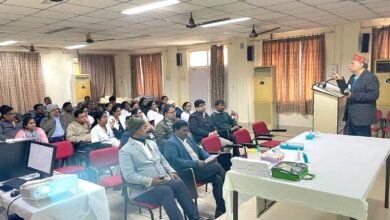Pityriasis Rosea: HERALD PATCHES
Dr Sabah Mir Medical & health BHMS (MPMSU)

Pityriasis rosea, a rash that usually appears on the torso, upper arms, thighs or neck, may sound worse than it is.
Though the exact causes are still unknown, doctors think it’s related to a viral infection, particularly some forms of herpes. It generally affects children, teens, and adults in their 20s, though it can appear in people of any age. It also may affect you if you’re pregnant.
It’s not contagious and, in most people, does not leave marks or scars after it heals.
Pityriasis rosea starts with a single patch on your back or torso. That’s called the “herald patch” or “mother patch.” It’s usually oval and about 2 to 10 centimetres (a little less than an inch to almost 4 inches) in diameter.
You may find it slightly raised or rough in texture. Sometimes, you may have a headache, fever, or sore throat to go along with it. A few days to a few weeks later after the appearance of the herald patch, more scaly patches or plaques appear on the chest and back, most often appearing from the top down. A few plaques may also appear on the thighs, upper arms, and neck, but are uncommon on the face, scalp, palms, or soles.
These secondary lesions tend to be smaller than the herald patch. They are also oval with a dry surface and the long axis of the oval lesion is often orientated around the ribs. Like the herald patch, they may have an inner collaret of scaling.
In this specific case, the lady was 50 years old, developed these rashes with severe itching. She was treated homoeopathically with her constitutional as well as complementary medicines with proper follow-ups.



